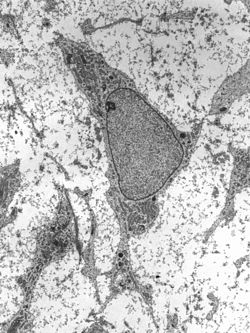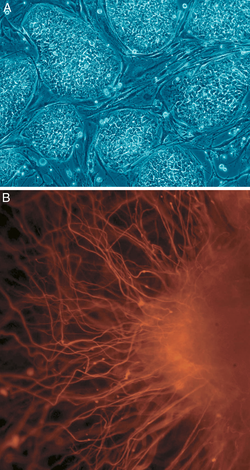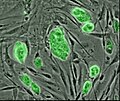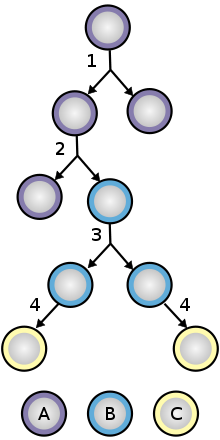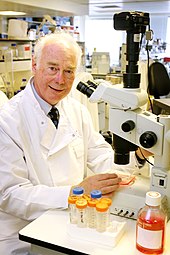For much of my life I have been a science writer. That means I eavesdrop on what’s going on in laboratories so I can tell interesting stories. It’s analogous to the way art critics write about art, but with a difference: we “science critics” rarely criticise. If we think a scientific paper is dumb, we just ignore it. There’s too much good stuff coming out of science to waste time knocking the bad stuff.
Sure, we occasionally take a swipe at pseudoscience—homeopathy, astrology, claims that genetically modified food causes cancer, and so on. But the great thing about science is that it’s self-correcting. The good drives out the bad, because experiments get replicated and hypotheses put to the test. So a really bad idea cannot survive long in science.
Or so I used to think. Now, thanks largely to climate science, I have changed my mind. It turns out bad ideas can persist in science for decades, and surrounded by myrmidons of furious defenders they can turn into intolerant dogmas.
This should have been obvious to me. Lysenkoism, a pseudo-biological theory that plants (and people) could be trained to change their heritable natures, helped starve millions and yet persisted for decades in the Soviet Union, reaching its zenith under Nikita Khrushchev. The theory that dietary fat causes obesity and heart disease, based on a couple of terrible studies in the 1950s, became unchallenged orthodoxy and is only now fading slowly.
What these two ideas have in common is that they had political support, which enabled them to monopolise debate. Scientists are just as prone as anybody else to “confirmation bias”, the tendency we all have to seek evidence that supports our favoured hypothesis and dismiss evidence that contradicts it—as if we were counsel for the defence. It’s tosh that scientists always try to disprove their own theories, as they sometimes claim, and nor should they. But they do try to disprove each other’s. Science has always been decentralised, so Professor Smith challenges Professor Jones’s claims, and that’s what keeps science honest.
What went wrong with Lysenko and dietary fat was that in each case a monopoly was established. Lysenko’s opponents were imprisoned or killed. Nina Teicholz’s book
The Big Fat Surprise shows in devastating detail how opponents of Ancel Keys’s dietary fat hypothesis were starved of grants and frozen out of the debate by an intolerant consensus backed by vested interests, echoed and amplified by a docile press.
Cheerleaders for alarm
This is precisely what has happened with the climate debate and it is at risk of damaging the whole reputation of science. The “bad idea” in this case is not that climate changes, nor that human beings influence climate change; but that the impending change is sufficiently dangerous to require urgent policy responses. In the 1970s, when global temperatures were cooling, some scientists could not resist the lure of press attention by arguing that a new ice age was imminent. Others called this nonsense and the World Meteorological Organisation rightly refused to endorse the alarm. That’s science working as it should. In the 1980s, as temperatures began to rise again, some of the same scientists dusted off the greenhouse effect and began to argue that runaway warming was now likely.
At first, the science establishment reacted sceptically and a diversity of views was aired. It’s hard to recall now just how much you were allowed to question the claims in those days. As Bernie Lewin reminds us in one chapter of a fascinating new book of essays called
Climate Change: The Facts (hereafter
The Facts), as late as 1995 when the second assessment report of the Intergovernmental Panel on Climate Change (IPCC) came out with its last-minute additional claim of a “discernible human influence” on climate,
Nature magazine warned scientists against overheating the debate.
Since then, however, inch by inch, the huge green pressure groups have grown fat on a diet of constant but ever-changing alarm about the future. That these alarms—over population growth, pesticides, rain forests, acid rain, ozone holes, sperm counts, genetically modified crops—have often proved wildly exaggerated does not matter: the organisations that did the most exaggeration trousered the most money. In the case of climate, the alarm is always in the distant future, so can never be debunked.
These huge green multinationals, with budgets in the hundreds of millions of dollars, have now systematically infiltrated science, as well as industry and media, with the result that many high-profile climate scientists and the journalists who cover them have become one-sided cheerleaders for alarm, while a hit squad of increasingly vicious bloggers polices the debate to ensure that anybody who steps out of line is punished. They insist on stamping out all mention of the heresy that climate change might not be lethally dangerous.
Today’s climate science, as Ian Plimer points out in his chapter in The Facts, is based on a “pre-ordained conclusion, huge bodies of evidence are ignored and analytical procedures are treated as evidence”. Funds are not available to investigate alternative theories. Those who express even the mildest doubts about dangerous climate change are ostracised, accused of being in the pay of fossil-fuel interests or starved of funds; those who take money from green pressure groups and make wildly exaggerated statements are showered with rewards and treated by the media as neutral.
Look what happened to a butterfly ecologist named Camille Parmesan when she published a paper on “
Climate and Species Range” that blamed climate change for threatening the Edith checkerspot butterfly with extinction in California by driving its range northward. The paper was cited more than 500 times, she was invited to speak at the White House and she was asked to contribute to the IPCC’s third assessment report.
Unfortunately, a distinguished ecologist called Jim Steele found fault with her conclusion: there had been more local extinctions in the southern part of the butterfly’s range due to urban development than in the north, so only the statistical averages moved north, not the butterflies. There was no correlated local change in temperature anyway, and the butterflies have since recovered throughout their range.
When Steele asked Parmesan for her data, she refused. Parmesan’s paper continues to be cited as evidence of climate change. Steele meanwhile is derided as a “denier”. No wonder a highly sceptical ecologist I know is very reluctant to break cover.
Jim Hansen, recently retired as head of the Goddard Institute of Space Studies at NASA, won over a million dollars in lucrative green prizes, regularly joined protests against coal plants and got himself arrested while at the same time he was in charge of adjusting and homogenising one of the supposedly objective data sets on global surface temperature. How would he be likely to react if told of evidence that climate change is not such a big problem?
Michael Oppenheimer, of Princeton University, who frequently testifies before Congress in favour of urgent action on climate change, was the Environmental Defense Fund’s senior scientist for nineteen years and continues to advise it. The EDF has assets of $209 million and since 2008 has had over $540 million from charitable foundations, plus $2.8 million in federal grants. In that time it has spent $11.3 million on lobbying, and has fifty-five people on thirty-two federal advisory committees. How likely is it that they or Oppenheimer would turn around and say global warming is not likely to be dangerous?
Why is it acceptable, asks the blogger Donna Laframboise, for the IPCC to “put a man who has spent his career cashing cheques from both the World Wildlife Fund (WWF) and Greenpeace in charge of its latest chapter on the world’s oceans?” She’s referring to the University of Queensland’s Ove Hoegh-Guldberg.
These scientists and their guardians of the flame repeatedly insist that there are only two ways of thinking about climate change—that it’s real, man-made and dangerous (the right way), or that it’s not happening (the wrong way). But this is a false dichotomy. There is a third possibility: that it’s real, partly man-made and not dangerous. This is the “lukewarmer” school, and I am happy to put myself in this category. Lukewarmers do not think dangerous climate change is impossible; but they think it is unlikely.
I find that very few people even know of this. Most ordinary people who do not follow climate debates assume that either it’s not happening or it’s dangerous. This suits those with vested interests in renewable energy, since it implies that the only way you would be against their boondoggles is if you “didn’t believe” in climate change.
What consensus about the future?
Sceptics such as Plimer often complain that “consensus” has no place in science. Strictly they are right, but I think it is a red herring. I happily agree that you can have some degree of scientific consensus about the past and the present. The earth is a sphere; evolution is true; carbon dioxide is a greenhouse gas. The IPCC claims in its most recent report that it is “95 per cent” sure that “more than half” of the (gentle) warming “since 1950” is man-made. I’ll drink to that, though it’s a pretty vague claim. But you really cannot have much of a consensus about the future. Scientists are terrible at making forecasts—indeed as Dan Gardner documents in his book
Future Babble they are often worse than laymen. And the climate is a chaotic system with multiple influences of which human emissions are just one, which makes prediction even harder.
The IPCC actually admits the possibility of lukewarming within its consensus, because it gives a range of possible future temperatures: it thinks the world will be between about 1.5 and four degrees warmer on average by the end of the century. That’s a huge range, from marginally beneficial to terrifyingly harmful, so it is hardly a consensus of danger, and if you look at the “probability density functions” of climate sensitivity, they always cluster towards the lower end.
What is more, in the small print describing the assumptions of the “representative concentration pathways”, it admits that the top of the range will only be reached if sensitivity to carbon dioxide is high (which is doubtful); if world population growth re-accelerates (which is unlikely); if carbon dioxide absorption by the oceans slows down (which is improbable); and if the world economy goes in a very odd direction, giving up gas but increasing coal use tenfold (which is implausible).
But the commentators ignore all these caveats and babble on about warming of “up to” four degrees (or even more), then castigate as a “denier” anybody who says, as I do, the lower end of the scale looks much more likely given the actual data. This is a deliberate tactic. Following what the psychologist Philip Tetlock called the “psychology of taboo”, there has been a systematic and thorough campaign to rule out the middle ground as heretical: not just wrong, but mistaken, immoral and beyond the pale. That’s what the word denier with its deliberate connotations of Holocaust denial is intended to do. For reasons I do not fully understand, journalists have been shamefully happy to go along with this fundamentally religious project.
Politicians love this polarising because it means they can attack a straw man. It’s what they are good at. “Doubt has been eliminated,” said Gro Harlem Brundtland, former Prime Minister of Norway and UN Special Representative on Climate Change, in a speech in 2007: “It is irresponsible, reckless and deeply immoral to question the seriousness of the situation. The time for diagnosis is over. Now it is time to act.” John Kerry says we have no time for a meeting of the flat-earth society. Barack Obama says that 97 per cent of scientists agree that climate change is “real, man-made and dangerous”. That’s just a lie (or a very ignorant remark): as I point out above, there is no consensus that it’s dangerous.
So where’s the outrage from scientists at this presidential distortion? It’s worse than that, actually. The 97 per cent figure is derived from two pieces of pseudoscience that would have embarrassed a homeopath. The first was a poll that found that 97 per cent of just seventy-nine scientists thought climate change was man-made—not that it was dangerous. A more recent poll of 1854 members of the American Meteorological Society found the true number is 52 per cent.
The second source of the 97 per cent number was a survey of scientific papers, which has now been comprehensively demolished by Professor Richard Tol of Sussex University, who is probably the world’s leading climate economist. As the Australian
blogger Joanne Nova summarised Tol’s findings, John Cook of the University of Queensland and his team used an unrepresentative sample, left out much useful data, used biased observers who disagreed with the authors of the papers they were classifying nearly two-thirds of the time, and collected and analysed the data in such a way as to allow the authors to adjust their preliminary conclusions as they went along, a scientific no-no if ever there was one. The data could not be replicated, and Cook himself threatened legal action to hide them. Yet neither the journal nor the university where Cook works has retracted the paper, and the scientific establishment refuses to stop citing it, let alone blow the whistle on it. Its conclusion is too useful.
This should be a huge scandal, not fodder for a tweet by the leader of the free world. Joanne Nova, incidentally, is an example of a new breed of science critic that the climate debate has spawned. With little backing, and facing ostracism for her heresy, this talented science journalist had abandoned any chance of a normal, lucrative career and systematically set out to expose the way the huge financial gravy train that is climate science has distorted the methods of science. In her chapter in The Facts, Nova points out that the entire trillion-dollar industry of climate change policy rests on a single hypothetical assumption, first advanced in 1896, for which to this day there is no evidence.
The assumption is that modest warming from carbon dioxide must be trebly amplified by extra water vapour—that as the air warms there will be an increase in absolute humidity providing “a positive feedback”. That assumption led to specific predictions that could be tested. And the tests come back negative again and again. The large positive feedback that can turn a mild warming into a dangerous one just is not there. There is no tropical troposphere hot-spot. Ice cores unambiguously show that temperature can fall while carbon dioxide stays high. Estimates of climate sensitivity, which should be high if positive feedbacks are strong, are instead getting lower and lower. Above all, the temperature has failed to rise as predicted by the models.
Scandal after scandal
The Cook paper is one of many scandals and blunders in climate science. There was the occasion in 2012 when the climate scientist Peter Gleick stole the identity of a member of the (sceptical) Heartland Institute’s board of directors, leaked confidential documents, and included also a “strategy memo” purporting to describe Heartland’s plans, which was a straight forgery. Gleick apologised but continues to be a respected climate scientist.
There was Stephan Lewandowsky, then at the University of Western Australia, who published a paper titled “
NASA faked the moon landing therefore [climate] science is a hoax”, from which readers might have deduced, in the words of a
Guardian headline, that “new research finds that sceptics also tend to support conspiracy theories such as the moon landing being faked”. Yet in fact in the survey for the paper, only ten respondents out of 1145 thought that the moon landing was a hoax, and seven of those did not think climate change was a hoax. A particular irony here is that two of the men who have actually been to the moon are vocal climate sceptics: Harrison Schmitt and Buzz Aldrin.
It took years of persistence before physicist Jonathan Jones and political scientist Ruth Dixon even managed to get into print (in March this year) a detailed and devastating critique of the Lewandowsky article’s methodological flaws and bizarre reasoning, with one journal allowing Lewandowsky himself to oppose the publication of their riposte. Lewandowsky published a later paper claiming that the reactions to his previous paper proved he was right, but it was so flawed it had to be retracted.
If these examples of odd scientific practice sound too obscure, try Rajendra Pachauri, chairman of the IPCC for thirteen years and often described as the “world’s top climate scientist”. He once dismissed as “voodoo science” an official report by India’s leading glaciologist, Vijay Raina, because it had challenged a bizarre claim in an IPCC report (citing a WWF report which cited an article in New Scientist), that the Himalayan glaciers would be gone by 2035. The claim originated with Syed Hasnain, who subsequently took a job at The Energy and Resources Institute (TERI), the Delhi-based company of which Dr Pachauri is director-general, and there his glacier claim enabled TERI to win a share of a three-million-euro grant from the European Union. No wonder Dr Pachauri might well not have wanted the 2035 claim challenged.
Yet Raina was right, it proved to be the IPCC’s most high-profile blunder, and Dr Pachauri had to withdraw both it and his “voodoo” remark. The scandal led to a highly critical report into the IPCC by several of the world’s top science academics, which recommended among other things that the IPCC chair stand down after one term. Dr Pachauri ignored this, kept his job, toured the world while urging others not to, and published a novel, with steamy scenes of seduction of an older man by young women. (He resigned this year following criminal allegations of sexual misconduct with a twenty-nine-year-old female employee, which he denies, and which are subject to police investigation.)
Yet the climate bloggers who constantly smear sceptics managed to avoid even reporting most of this. If you want to follow Dr Pachauri’s career you have to rely on a tireless but self-funded investigative journalist: the Canadian Donna Laframboise. In her chapter in The Facts, Laframboise details how Dr Pachauri has managed to get the world to describe him as a Nobel laureate, even though this is simply not true.
But male sceptics have scored successes too. There was the case of the paper the IPCC relied upon to show that urban heat islands (the fact that cities are generally warmer than the surrounding countryside, so urbanisation causes local, but not global, warming) had not exaggerated recent warming. This paper turned out—as the sceptic Doug Keenan proved—to be based partly
on non-existent data on forty-nine weather stations in China. When corrected, it emerged that the urban heat island effect actually accounted for 40 per cent of the warming in China.
There was the Scandinavian lake sediment core that was cited as evidence of sudden recent warming, when it was actually being used “upside down”—the opposite way the authors of the study thought it should be used: so if anything it showed cooling.
There was the southern hemisphere hockey-stick that had been created by the omission of inconvenient data series.
There was the infamous “
hide the decline” incident when a tree-ring-derived graph had been truncated to disguise the fact that it seemed to show recent cooling.
And of course there was
the mother of all scandals, the “hockey stick” itself: a graph that purported to show the warming of the last three decades of the twentieth century as unprecedented in a millennium, a graph that the IPCC was so thrilled with that it published it six times in its third assessment report and displayed it behind the IPCC chairman at his press conference. It was a graph that persuaded me to abandon my scepticism (until I found out about its flaws), because I thought
Nature magazine would never have published it without checking. And it is a graph that was systematically shown by Steven McIntyre and Ross McKitrick to be wholly misleading, as McKitrick recounts in glorious detail in his chapter in
The Facts.
Its hockey-stick shape depended heavily on one set of data from bristlecone pine trees in the American south-west, enhanced by a statistical approach to over-emphasise some 200 times any hockey-stick shaped graph. Yet bristlecone tree-rings do not, according to those who collected the data, reflect temperature at all. What is more, the scientist behind the original paper, Michael Mann, had known all along that his data depended heavily on these inappropriate trees and a few other series, because when finally prevailed upon to release his data he accidentally included a file called “censored” that proved as much: he had tested the effect of removing the bristlecone pine series and one other, and found that the hockey-stick shape disappeared.
In March this year Dr
Mann published a paper claiming the Gulf Stream was slowing down. This garnered headlines all across the world. Astonishingly, his evidence that the Gulf Stream is slowing down came not from the Gulf Stream, but from “proxies” which included—yes—bristlecone pine trees in Arizona, upside-down lake sediments in Scandinavia and larch trees in Siberia.
The democratisation of science
Any one of these scandals in, say, medicine might result in suspensions, inquiries or retractions. Yet the climate scientific establishment repeatedly reacts as if nothing is wrong. It calls out any errors on the lukewarming end, but ignores those on the exaggeration end. That complacency has shocked me, and done more than anything else to weaken my long-standing support for science as an institution. I repeat that I am not a full sceptic of climate change, let alone a “denier”. I think carbon-dioxide-induced warming during this century is likely, though I think it is unlikely to prove rapid and dangerous. So I don’t agree with those who say the warming is all natural, or all driven by the sun, or only an artefact of bad measurement, but nor do I think anything excuses bad scientific practice in support of the carbon dioxide theory, and every time one of these scandals erupts and the scientific establishment asks us to ignore it, I wonder if the extreme sceptics are not on to something. I feel genuinely betrayed by the profession that I have spent so much of my career championing.
There is, however, one good thing that has happened to science as a result of the climate debate: the democratisation of science by sceptic bloggers. It is no accident that sceptic sites keep winning the “Bloggies” awards. There is nothing quite like them for massive traffic, rich debate and genuinely open peer review. Following Steven McIntyre on tree rings, Anthony Watts or Paul Homewood on temperature records, Judith Curry on uncertainty, Willis Eschenbach on clouds or ice cores, or Andrew Montford on media coverage has been one of the delights of recent years for those interested in science. Papers that had passed formal peer review and been published in journals have nonetheless been torn apart in minutes on the blogs. There was the time Steven McIntyre found that an Antarctic temperature trend arose “entirely from the impact of splicing the two data sets together”. Or when Willis Eschenbach showed a published chart had “cut the modern end of the ice core carbon dioxide record short, right at the time when carbon dioxide started to rise again” about 8000 years ago, thus omitting the startling but inconvenient fact that carbon dioxide levels rose while temperatures fell over the following millennia.
Scientists don’t like this lèse majesté, of course. But it’s the citizen science that the internet has long promised. This is what eavesdropping on science should be like—following the twists and turns of each story, the ripostes and counter-ripostes, making up your own mind based on the evidence. And that is precisely what the non-sceptical side just does not get. Its bloggers are almost universally wearily condescending. They are behaving like sixteenth-century priests who do not think the Bible should be translated into English.
Renegade heretics in science itself are especially targeted. The BBC was subjected to torrents of abuse for even interviewing Bob Carter, a distinguished geologist and climate science expert who does not toe the alarmed line and who is one of the editors of Climate Change Reconsidered, a serious and comprehensive survey of the state of climate science organised by the Non-governmental Panel on Climate Change and ignored by the mainstream media.
Judith Curry of Georgia Tech moved from alarm to mild scepticism and has endured vitriolic criticism for it. She recently wrote:
There is enormous pressure for climate scientists to conform to the so-called consensus. This pressure comes not only from politicians, but from federal funding agencies, universities and professional societies, and scientists themselves who are green activists and advocates. Reinforcing this consensus are strong monetary, reputational, and authority interests. The closing of minds on the climate change issue is a tragedy for both science and society.
The distinguished Swedish meteorologist Lennart Bengtsson was so frightened for his own family and his health after he announced last year that he was joining the advisory board of the Global Warming Policy Foundation that he withdrew, saying, “It is a situation that reminds me about the time of McCarthy.”
The astrophysicist Willie Soon was falsely accused by a Greenpeace activist of failing to disclose conflicts of interest to an academic journal, an accusation widely repeated by mainstream media.
Clearing the middle ground
Much of this climate war parallels what has happened with Islamism, and it is the result of a similar deliberate policy of polarisation and silencing of debate. Labelling opponents “Islamophobes” or “deniers” is in the vast majority of cases equally inaccurate and equally intended to polarise. As Asra Nomani wrote in the Washington Post recently, a community of anti-blasphemy police arose out of a deliberate policy decision by the Organisation of Islamic Cooperation:
and began trying to control the debate on Islam. This wider corps throws the label of “Islamophobe” on pundits, journalists and others who dare to talk about extremist ideology in the religion … The insults may look similar to Internet trolling and vitriolic comments you can find on any blog or news site. But they’re more coordinated, frightening and persistent.
Compare that to what happened to Roger Pielke Jr, as recounted by James Delingpole in The Facts. Pielke is a professor of environmental studies at the University of Colorado and a hugely respected expert on disasters. He is no denier, thinking man-made global warming is real. But in his own area of expertise he is very clear that the rise in insurance losses is because the world is getting wealthier and we have more stuff to lose, not because more storms are happening. This is incontrovertibly true, and the IPCC agrees with him. But when he said this on Nate Silver’s FiveThirtyEight website he and Silver were savaged by commenters, led by one Rob Honeycutt. Crushed by the fury he had unleashed, Silver apologised and dropped Pielke as a contributor.
Rob Honeycutt and his allies knew what they were doing. Delingpole points out that Honeycutt (on a different website) urged people to “send in the troops to hammer down” anything moderate or sceptical, and to “grow the team of crushers”. Those of us who have been on the end of this sort of stuff know it is exactly like what the blasphemy police do with Islamophobia. We get falsely labelled “deniers” and attacked for heresy in often the most ad-hominem way.
Even more shocking has been the bullying lynch mob assembled this year by alarmists to prevent the University of Western Australia, erstwhile employers of the serially debunked conspiracy theorist Stephan Lewandowsky, giving a job to the economist Bjorn Lomborg. The grounds were that Lomborg is a “denier”. But he’s not. He does not challenge the science at all. He challenges on economic grounds some climate change policies, and the skewed priorities that lead to the ineffective spending of money on the wrong environmental solutions. His approach has been repeatedly vindicated over many years in many different topics, by many of the world’s leading economists.
Yet there was barely a squeak of protest from the academic establishment at the way he was howled down and defamed for having the temerity to try to set up a research group at a university.
Well, internet trolls are roaming the woods in every subject, so what am I complaining about? The difference is that in the climate debate they have the tacit or explicit support of the scientific establishment. Venerable bodies like the Royal Society almost never criticise journalists for being excessively alarmist, only for being too lukewarm, and increasingly behave like pseudoscientists, explaining away inconvenient facts.
Making excuses for failed predictions
For example, scientists predicted a retreat of Antarctic sea ice but it has expanded instead, and nowadays they are claiming, like any astrologer, that this is because of warming after all. “Please,” says Mark Steyn in The Facts:
No tittering, it’s so puerile—every professor of climatology knows that the thickest ice ever is a clear sign of thin ice, because as the oceans warm, glaciers break off the Himalayas and are carried by the El Ninja down the Gore Stream past the Cape of Good Horn where they merge into the melting ice sheet, named after the awareness-raising rapper Ice Sheet …
Or consider this example, from the Royal Society’s recent booklet on climate change:
Does the recent slowdown of warming mean that climate change is no longer happening? No. Since the very warm surface temperatures of 1998 which followed the strong 1997-98 El Niño, the increase in average surface temperature has slowed relative to the previous decade of rapid temperature increases, with more of the excess heat being stored in the oceans.
You would never know from this that the “it’s hiding in the oceans” excuse is just one unproven hypothesis—and one that implies that natural variation exaggerated the warming in the 1990s, so reinforcing the lukewarm argument. Nor would you know (as Andrew Bolt recounts in his chapter in The Facts) that the pause in global warming contradicts specific and explicit predictions such as this, from the UK Met Office: “by 2014 we’re predicting it will be 0.3 degrees warmer than in 2004”. Or that the length of the pause is now past the point where many scientists said it would disprove the hypothesis of rapid man-made warming. Dr Phil Jones, head of the Climatic Research Unit at the University of East Anglia, said in 2009: “Bottom line: the ‘no upward trend’ has to continue for a total of 15 years before we get worried.” It now has.
Excusing failed predictions is a staple of astrology; it’s the way pseudoscientists argue. In science, as Karl Popper long ago insisted, if you make predictions and they fail, you don’t just make excuses and insist you’re even more right than before. The Royal Society once used to promise “never to give their opinion, as a body, upon any subject”. Its very motto is “nullius in verba”: take nobody’s word for it. Now it puts out catechisms of what you must believe in. Surely, the handing down of dogmas is for churches, not science academies. Expertise, authority and leadership should count for nothing in science. The great Thomas Henry Huxley put it this way: “The improver of natural knowledge absolutely refuses to acknowledge authority, as such. For him, scepticism is the highest of duties; blind faith the one unpardonable sin.” Richard Feynman was even pithier: “Science is the belief in the ignorance of experts.”
The harm to science
I dread to think what harm this episode will have done to the reputation of science in general when the dust has settled. Science will need a reformation. Garth Paltridge is a distinguished Australian climate scientist, who, in The Facts, pens a wise paragraph that I fear will be the epitaph of climate science:
We have at least to consider the possibility that the scientific establishment behind the global warming issue has been drawn into the trap of seriously overstating the climate problem—or, what is much the same thing, of seriously understating the uncertainties associated with the climate problem—in its effort to promote the cause. It is a particularly nasty trap in the context of science, because it risks destroying, perhaps for centuries to come, the unique and hard-won reputation for honesty which is the basis for society’s respect for scientific endeavour.
And it’s not working anyway. Despite avalanches of money being spent on research to find evidence of rapid man-made warming, despite even more spent on propaganda and marketing and subsidising renewable energy, the public remains unconvinced. The most recent polling data from Gallup shows the number of Americans who worry “a great deal” about climate change is down slightly on thirty years ago, while the number who worry “not at all” has doubled from 12 per cent to 24 per cent—and now exceeds the number who worry “only a little” or “a fair amount”. All that fear-mongering has achieved less than nothing: if anything it has hardened scepticism.
None of this would matter if it was just scientific inquiry, though that rarely comes cheap in itself. The big difference is that these scientists who insist that we take their word for it, and who get cross if we don’t, are also asking us to make huge, expensive and risky changes to the world economy and to people’s livelihoods. They want us to spend a fortune getting emissions down as soon as possible. And they want us to do that even if it hurts poor people today, because, they say, their grandchildren (who, as Nigel Lawson points out, in The Facts, and their models assume, are going to be very wealthy) matter more.
Yet they are not prepared to debate the science behind their concern. That seems wrong to me.
Matt Ridley is an English science journalist whose books include The Rational Optimist: How Prosperity Evolves. A member of the House of Lords, he has a website at www.mattridley.co.uk. He declares an interest in coal through the leasing of land for mining.








